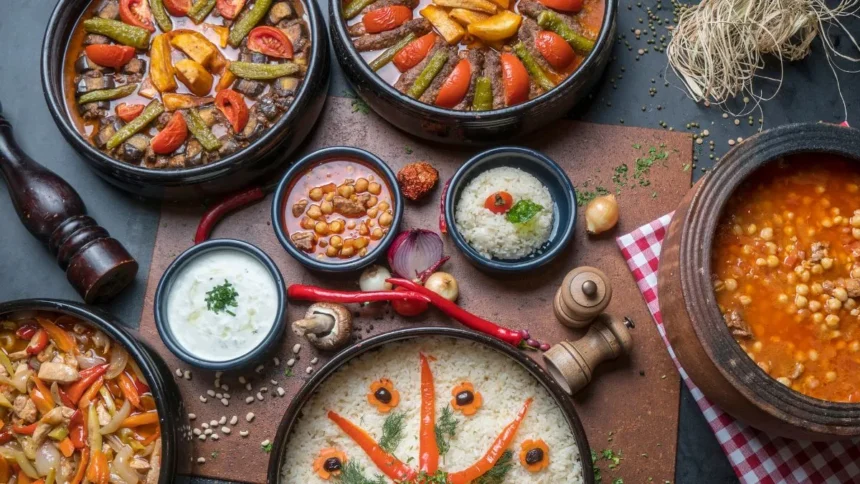Introduction to Global Culinary Delights
Food has a unique ability to connect people across cultures, traditions, and continents, offering a taste of different lifestyles and histories with each bite. Global cuisine brings together a wide variety of flavors, ingredients, and cooking techniques from every corner of the world, creating an endless array of delicious experiences. From the fragrant spices of Asia to the rich herbs of the Mediterranean, each culture’s food tells a story of its people and their way of life. Embarking on a culinary journey across global cuisines is a way to explore these stories, savoring both traditional dishes and modern culinary innovations that satisfy every palate.
Asia: A World of Spices and Flavors
Asian cuisine is known for its bold use of spices, unique flavor profiles, and diverse cooking techniques that vary greatly across the continent. Countries like India, Thailand, China, and Japan each offer distinct culinary traditions, from the hot and spicy curries of India to the umami-rich sushi of Japan. Asian cuisine often combines flavors that are sweet, salty, sour, and spicy in one dish, creating a balance that excites the palate.
Street food is an integral part of Asian food culture, offering everything from Vietnamese pho to Korean BBQ and dim sum in China. These dishes, prepared with fresh local ingredients, reflect the vibrant food scenes in cities across Asia. Each region offers traditional recipes passed down through generations, with dishes like pad Thai, ramen, and biryani becoming popular worldwide. For those seeking culinary adventure, Asia’s spice blends, sauces, and traditional recipes provide endless opportunities to explore new and exotic flavors.
The Richness of Mediterranean Cuisine
Mediterranean cuisine is celebrated for its focus on fresh, seasonal ingredients and a balance of flavors that reflect the region’s diverse cultural heritage. Drawing from countries like Greece, Italy, Turkey, and Spain, Mediterranean dishes are often rooted in simplicity, using herbs like rosemary, basil, and oregano, along with olives, tomatoes, and fresh vegetables. This cuisine’s focus on healthy fats, lean proteins, and whole grains has earned it a reputation for being both delicious and nourishing.
Dishes like Italian pasta, Spanish paella, Greek moussaka, and Turkish kebabs have become beloved worldwide, reflecting the Mediterranean’s enduring influence on global cuisine. The emphasis on local ingredients and traditional cooking techniques makes Mediterranean food both flavorful and health-conscious. Food festivals across the region celebrate these dishes, bringing people together to savor the flavors that are central to Mediterranean food culture. For those who love fresh herbs and bold flavors, the Mediterranean offers a culinary journey rich in history and tradition.
Exploring Fusion and Modern Cuisines
As global travel and cultural exchanges increase, fusion cuisine has emerged as a way to blend flavors and techniques from different cultures into innovative dishes. Fusion cuisine combines elements from diverse food traditions, creating a contemporary approach to cooking that offers something new and exciting. For example, sushi burritos and Korean tacos are popular fusion dishes that blend Japanese, Korean, and Mexican flavors in unexpected and delicious ways.
Modern chefs and food enthusiasts are pushing boundaries by experimenting with fusion, creating dishes that are both creative and rooted in cultural heritage. This style of cooking allows traditional flavors to be experienced in new forms, expanding the possibilities of culinary diversity. Many gourmet restaurants and international food markets highlight these cross-cultural dishes, making fusion cuisine a delicious example of how food can transcend borders and create connections among people worldwide.
Conclusion: Discovering Flavor Across Borders
Exploring global cuisines is a journey through the rich flavors, spices, and traditions of the world. Each culture’s cuisine offers a unique perspective on food, reflecting its history, resources, and traditions. From the exotic spices of Asia to the fresh herbs of the Mediterranean and the innovative fusion creations found in modern restaurants, global flavors offer endless culinary experiences that cater to every taste.
As we delve into international recipes, traditional dishes, and regional cooking techniques, we can appreciate the diversity that makes global cuisine so special. Whether through street food, gourmet dishes, or home-cooked recipes, the flavors of the world invite us to celebrate our shared love of food and the connections it creates across cultures. Savoring these dishes allows us to experience a world of flavor, one bite at a time.


